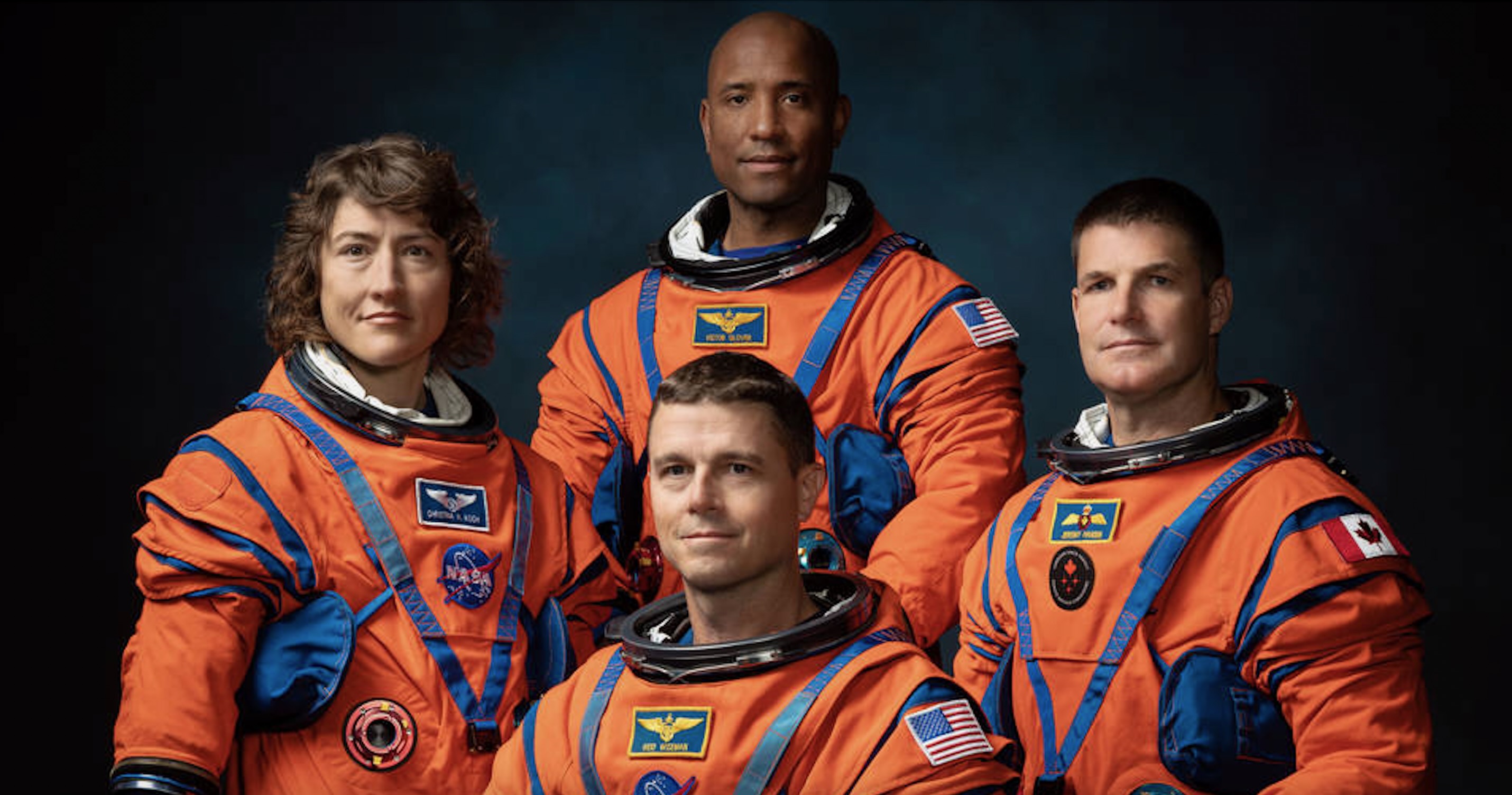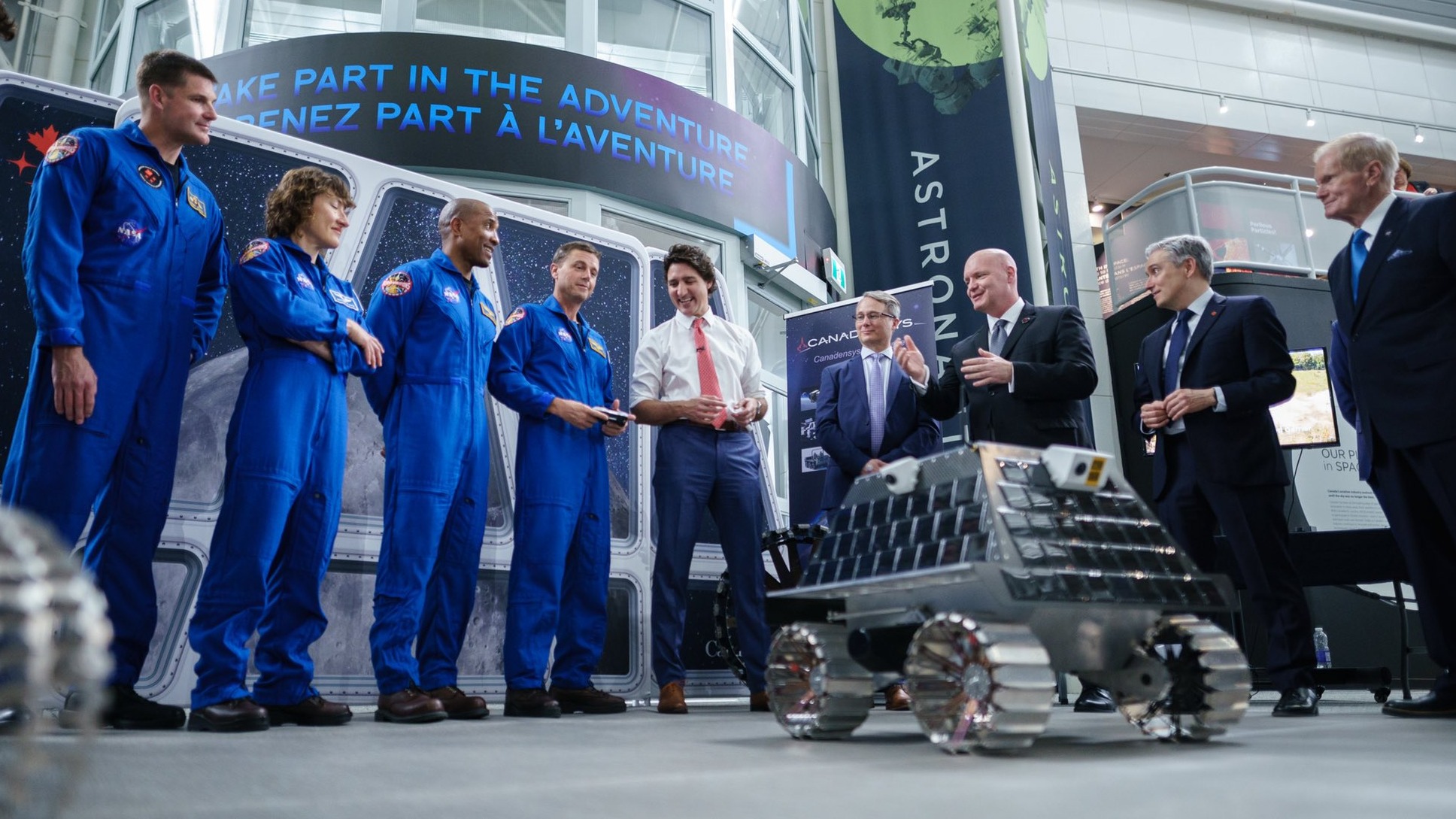
The first moon crew in half a century is starting to train for its highly anticipated mission.
Six weeks after the four Artemis 2 astronauts were announced in a ceremony in Houston, the group will begin learning all they need to circle the moon during their mission, which which will launch no earlier than November 2024.
The astronauts will be the first humans ever to fly atop NASA's Space Launch System megarocket and ride in the agency's Orion spacecraft. (Both systems were tested successfully during Artemis 1 last year, but with only mannequins riding on board.)
"We're building a robust training plan for the crew to ensure they're ready for every aspect of this first mission to the moon under Artemis, on our newest spacecraft and rocket," Jacki Mahaffey, lead training officer for the Artemis 2 crew, said in a Monday (May 15) NASA statement. The crew will also give feedback to help with future Artemis missions to the moon or the moon's vicinity, she added.
Related: Meet the 4 astronauts flying on NASA's Artemis 2 moon mission
NASA's Artemis program aims to return humans to the moon for the first time since Apollo, which sent 24 individuals to lunar orbit or the surface between 1968 and 1972. Artemis will take advantage of 50-plus years of technological developments for more adaptable spacesuits and better computer smarts on all systems. The crew will also be more diverse than Apollo, which only flew white males.
The four Artemis 2 astronauts are NASA commander Reid Wiseman, NASA pilot Victor Glover (the first Black astronaut to leave low Earth orbit), NASA mission specialist Christina Koch (the first woman on a moon mission) and Jeremy Hansen (the first Canadian to go beyond Earth orbit.) Wiseman, Glover and Koch all have accumulated many months of experience on International Space Station missions and in many cases set records.
Hansen is a spaceflight rookie. The Canadian Space Agency contributes 2.3% to the ISS partnership via the Canadarm robotic series of arms. By association, the CSA receives an astronaut seat on a space mission about every six years. But Hansen has been in the program since 2009 and is well-regarded for his space policy experience. He was also the first Canadian to manage the training schedule of an astronaut class.
Related: Artemis 2's Canadian astronaut got his moon mission seat with 'potato salad'

Artemis 2's training will span about 18 months to prepare the crew for their 10-day journey around the moon, NASA officials said. Specific prep will include learning about how Orion and SLS behave during launch, going to the moon and back, re-entering Earth's atmosphere and splashdown, especially with regard to emergency situations.
The astronauts all have experience learning about other spacecraft types and in airplanes and will pivot that work to Orion-specific training on controls, crew displays, audio and imagery. Also integral to the mission will be learning how to communicate with Mission Control and recovery teams at a distance, which will begin in earnest about 12 months before launch. (All ground teams have their own training as well to prepare for the ambitious mission.)
Notably, Artemis 2 plans to do a "rendezvous and proximity operations demonstration" in the mission's first day in space, which essentially is practice to see how Orion handles in low Earth orbit before it goes out to the moon. NASA officials said the activity would "reduce risk" for future Orion missions, such as docking with future human landing systems or the planned Gateway space station around the moon.
Little information about science experiments or technology payloads aboard Artemis 2 has yet been released, but if space station missions are any guide, that information will be made available much closer to the launch date.
Related: Artemis 2 will use lasers to beam high-definition footage from the moon (video)
Following Artemis 2, assuming all training and funding keeps to schedule, Artemis 3 may land a new set of astronauts on the moon's surface as soon as late 2025. That date may get pushed back a bit, however, NASA's Jim Free said Monday (May 15) at the human exploration and operations committee of the NASA Advisory Council.
Free is the associate administrator for the Exploration Systems Development Mission Directorate at NASA, making him one of the top officials responsible for the Artemis program. NASA is still awaiting development milestones for Artemis spacesuits and lunar landers, Free said during the presentation, as reported by SpaceNews.
Both systems had complications during development. NASA elected to pivot to privately made spacesuits after internal issues developing agency-made systems; the spacesuit task order for Artemis 3 subsequently went to Houston-based company Axiom Space.
The Artemis crewed lander process was delayed by complaints after SpaceX was unexpectedly awarded a sole-source contract after a competition. (The agency was asked by Congress to find a second company to develop a second human landing system, and that company's name will be revealed on Friday, May 19, in an event you can watch live here at Space.com.)
The hardware for Artemis 2, meanwhile, continues being assembled and tested. Orion recently completed acoustic tests at the Kennedy Space Center in Florida to ensure it can safely withstand vibrations during launch and all mission phases, NASA officials said in a May 12 blog post. Last month, NASA officials also released video of the Artemis 2 SLS being pieced together at NASA's Michoud Assembly Facility in New Orleans.
Follow us on Twitter @Spacedotcom or Facebook.







